Silent Night
An Easy To Play Version For Guitar
A yearly favorite, Silent Night requires only three chords and is a great song for a beginner to learn.
Of course, it has that dreaded F-chord that causes so many problems for new guitarists, so I'll show you a few options you can try that might make this song easier to play.
Here's the song, in the Key of C. I've included two versions: one with chords, and another showing the melody in TAB.
Silent Night Chords
Song originally written by Joseph Mohr & Franz Gruber
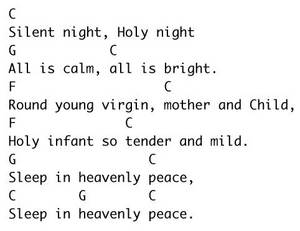
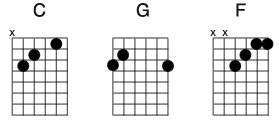
TAB for Silent Night Melody
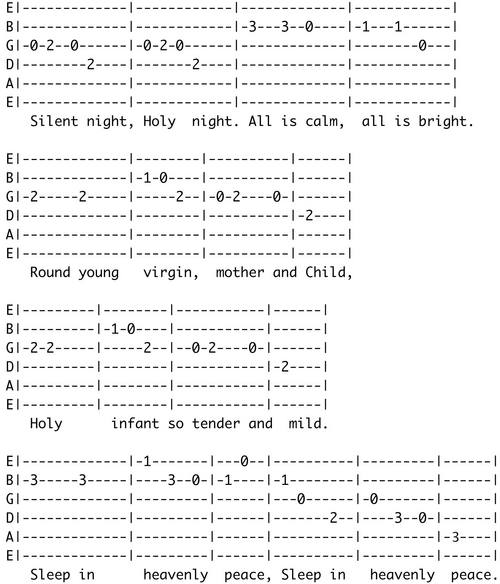
Avoiding That F-Major Chord
If you have trouble playing the standard form for an open F-Major chord, keep practicing, you will eventually be able to play it. In the meantime, you can put to use all those strings and frets to try out some alternatives.
Alternative #1: Play a Partial F-Chord
Who says you need to play five or six strings all the time? There's no rule, so don't feel obligated. Play what you can. If this means you skip some of the strings, so what?
Until you can play the standard F-Major Form, try playing only the first three strings, as shown here:
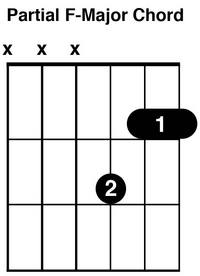 |
|---|
Alternative #2: Play an Easier Form
The D-Major chord is one of the first that most beginners learn. A key is that it's fairly easy to play: your fingers are close together and you press on the thinnest strings (so you're unlikely to produce buzz from poor form or weak fingers).
If you can play a D-Major chord, you can play an F-Major chord. How? Simply play the D-form at the 5th fret. Here's what it looks like:
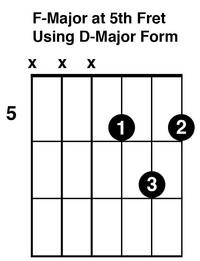 |
|---|
Using this form, at the fifth fret, might work for you, but what if this creates a new problem, you just can't jump up to the fifth fret from may face is a complication if you choose this form,
Alternative #3: Try another Easy Form
One complication you may have with Alternative #2 is moving your hand from the first fret position up to fifth position, and then back again. If so, consider using alternate forms for the C and G chord as well as the F. Since the F-Major alternative form uses only the first three strings, and since the point of these alternatives is to illustrate easier-to-play forms, I've chosen other three-string versions to share with you.
You may find these alternatives easier to play. Here's what they look like:
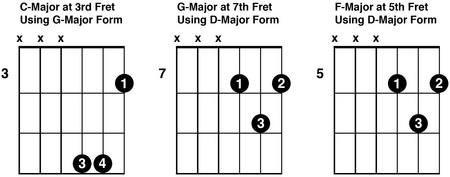 |
|---|
Alternative #4: Substitute A Minor Chord
A fourth alternative for playing the open F-Major Chord is to substitute the D-minor chord. Substituting a minor chord is easy to do, might lead to an easier-to-play chord form, and can give a fresh feel to a familiar tune.
Determining which minor chord to play is simple, just count down the scale two whole notes and play that minor chord. So, counting down two notes from F is D. The substitute chord is D-minor.
Here's what the D-minor chord looks like:
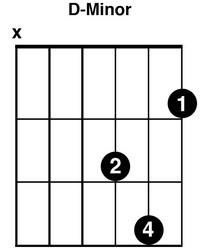 |
|---|
For more on chord substitution, read the Easy Guitar Tips page.


